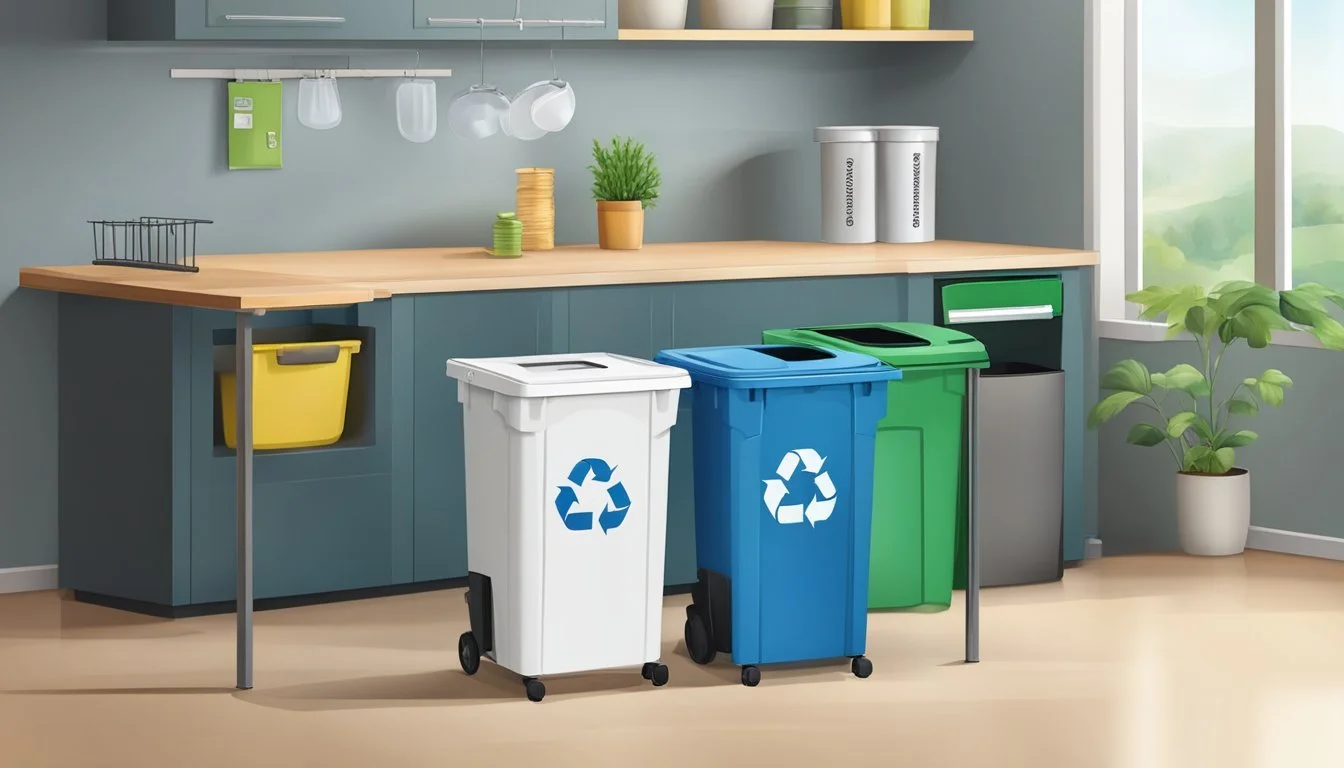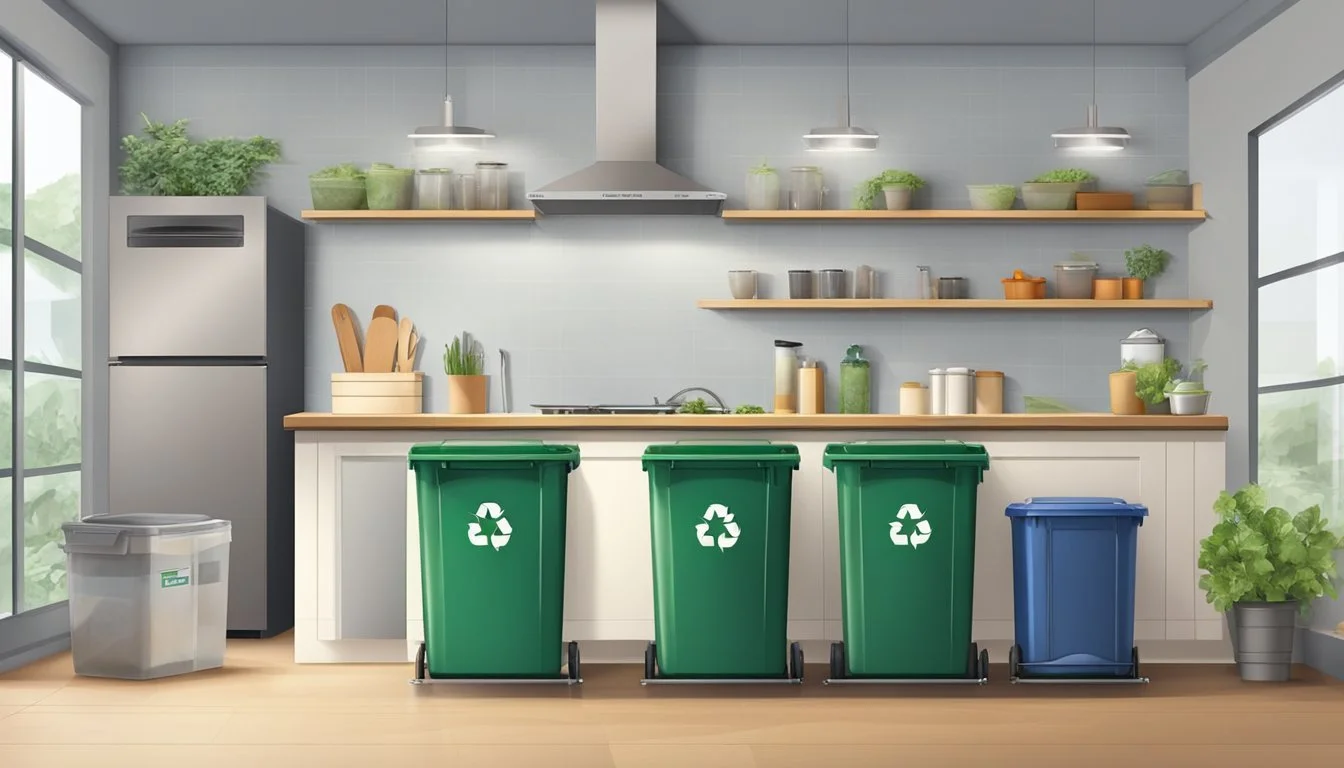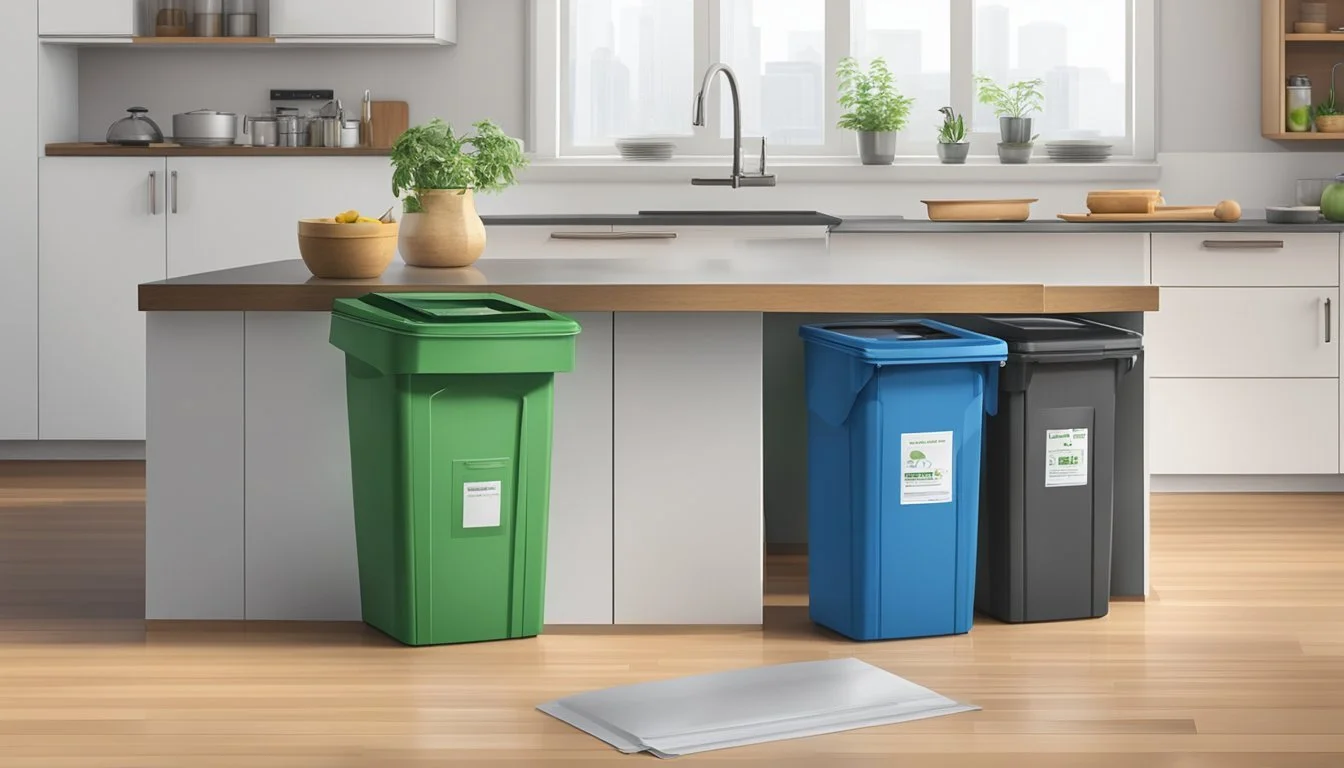How to Create a Kitchen Recycling Station
A Step-by-Step Guide
Creating a kitchen recycling station is a practical step in managing household waste efficiently. It not only contributes to a cleaner environment but also instills a habit of sorting and disposing of recyclables in an organized manner. Proper disposal channels for items such as plastic, paper, and glass ensure that they can be processed correctly, reducing the amount of waste that ends up in landfills. A well-organized kitchen recycling center can be the difference between recyclable materials being repurposed and them contributing to pollution.
Designing a dedicated area in the kitchen for recycling should be convenient and accessible to all family members. By selecting a space that integrates seamlessly with the flow of the kitchen, individuals are more likely to utilize the station. Clear labeling is crucial for the effectiveness of a recycling station; it guides users on where to place each type of recyclable material, enhancing the recycling process. Additionally, choosing the right containers that fit the allocated space and cater to the volume of recyclables generated will ensure the station remains functional and tidy.
A well-thought-out kitchen recycling station addresses the challenge of managing household recyclables in a sustainable way. By prioritizing ease of use and organization, it encourages consistent recycling habits that benefit both the household and the wider community. As recycling becomes an integral part of the daily routine, the kitchen recycling station proves to be a small yet significant step towards environmental stewardship.
Benefits of Recycling in the Kitchen
Recycling in the kitchen serves multiple benefits, impacting not only the environment by reducing waste but also offering cost and space efficiencies. It leverages everyday activities to foster a sustainable lifestyle.
Environmental Impact
Recycling reduces kitchen waste, which otherwise contributes to growing landfill sites. When one recycles, they diminish the volume of refuse that leads to pollution and the consumption of natural resources. Additionally, recycling conserves energy as creating new products from recycled materials often requires less energy than producing them from raw materials.
Conservation of resources: Saves trees, water, and minerals.
Reduction of pollution: Less waste means a decrease in greenhouse gas emissions.
Cost Savings
Implementing a recycling station in the kitchen can lead to noticeable cost savings. Households save money by reducing the need for waste collection services, and it can also encourage the efficient use of resources, meaning fewer purchases of disposable items.
Reduced waste bill: Lower expenses from decreased garbage output.
Minimized product purchases: By reusing materials, one can avoid the cost of buying new products.
Space Efficiency
A carefully designed recycling station optimizes kitchen space, which is particularly beneficial in small homes. Assigning a specific area for recycling keeps the kitchen organized and can make use of underutilized spaces.
Designated recycling zones: Prevents clutter by having a clear space for recyclables.
Multipurpose solutions: Recycling bins can double as a sorting area for other kitchen tasks.
Planning Your Kitchen Recycling Station
When setting up a kitchen recycling station, careful planning ensures functionality and ease of use. It is important to assess space availability, select the optimal location, and determine the specific recycling needs of a household.
Assessing Your Kitchen Space
The first step is to measure the dimensions of the potential recycling area. Homeowners should look for spaces that are easily accessible yet do not interfere with kitchen traffic. Cabinetry, especially under the sink or in a pantry, often provides ample space. They should note the height, depth, and width of the space, accounting for any obstructions or necessary clearances.
Choosing the Right Location
The prime location for a recycling center is somewhere convenient and close to where waste is most frequently generated. Areas under the sink or near the kitchen exit may be suitable. However, one must ensure the chosen spot is visible and accessible to all household members, including guests. The goal is to encourage consistent use.
Determining Your Recycling Needs
Households need to consider the types and volumes of recyclables they typically produce. This involves evaluating:
Types of recyclables: Plastic, paper, glass, etc.
Volume: The amount of recyclable material generated per day/week.
Sorting system: Whether the municipality requires sorting or if single-stream recycling is allowed.
With these factors in mind, homeowners can decide on the number and size of bins needed and whether they require additional features like clear labels or color-coding for ease of use.
Selecting Recycling Bins and Containers
Creating an effective kitchen recycling station starts with choosing the right bins and containers. Key considerations include the types of recyclables you'll sort, the durability and size of the containers, and their fit within your kitchen's style and decor.
Types of Recycling Bins
One should select bins based on the recyclables commonly used in their household, typically paper, plastic, glass, and metal. Multi-stream recycling bins are ideal for sorting different materials, while homeowners with limited space might consider stackable or nesting bins to maximize efficiency.
Single-stream bins: For users with less rigorous sorting needs or community single-sort recycling programs.
Separated compartments: To prevent cross-contamination, containers with divided sections are practical.
Selecting Materials and Sizes
When picking recycling bins, materials matter for both function and sustainability. Plastic bins are lightweight and easy to clean, while metal or stainless steel options are more durable and can provide a sleek look. Size is essential to hold the recyclables between collection days but also needs to fit the designated kitchen space.
Dimensions: Measure the space for your recycling station; allow two inches above the bin in pull-out cabinets for clearance.
Capacity: Consider the volume of recyclables and choose sizes that accommodate without frequent emptying.
Aesthetic Considerations
The style of recycling bins should complement the kitchen's overall aesthetic. Containers can be color-coded or use clear labels with images to simplify sorting for household members and guests. For those preferring to keep recycling bins out of sight, options include integrated pull-out bins within cabinetry or using an existing pantry or under-sink area.
Visible bins: Choose containers with a design that matches or complements your kitchen decor.
Concealed bins: Look for built-in solutions or bins that can easily fit in existing cabinetry or closets.
Setting Up Your Recycling Station
Creating an efficient kitchen recycling station requires careful arrangement and labeling of bins and containers. When set up properly, it provides a seamless way to manage recyclables in your home.
Arranging Bins and Containers
Bins and containers form the core of any recycling station. In the kitchen, a homeowner may place a small bin under the sink to save floor space, keeping it conveniently accessible while preparing food or cleaning up. For those with more space, the pantry or garage may house larger bins for different types of recyclables. It's crucial to position these containers in an area where they are not obstructive but remain easy to reach.
Under-sink bin: Ideal for small kitchens to save floor space
Pantry storage: Perfect for sorting different recyclables without cluttering the kitchen
Garage station: Suitable for larger households with ample storage space
Labeling for Easy Sorting
Clear labeling is essential for maintaining a recycling station's effectiveness. Labels should be made highly visible and legible to avoid confusion and ensure proper sorting. Each bin must be marked with the type of material it is intended for, such as plastics, glass, paper, or metals. Using different colors for labels can also aid in quick identification.
Bin Labels:
Plastics
Glass
Paper
Metals
DIY Recycling Solutions
DIY solutions can be both cost-effective and creative ways to set up a recycling station. Homeowners can repurpose metal buckets or other durable containers, which can be placed strategically in the kitchen or mounted on a wall to save floor space. These DIY containers can be adapted to fit the available space and personalized to fit the homeowner's needs. For example, a stacking system with labeled sections for different materials can be created using simple wooden frames and bins.
Metal Buckets: Versatile and can be placed anywhere from the kitchen to the garage
Wall-mounted system: Space-saving and visible
Stacking system: Customizable and efficient for sorting multiple recyclables
Streamlining the Recycling Process
Creating an efficient kitchen recycling station involves establishing a workflow, instructing household members on its use, and maintaining the system for optimal operation. These steps help ensure the recycling process is convenient and sustainable.
Creating an Efficient Workflow
A well-organized recycling workflow involves picking strategically located bins, possibly inside a cabinet, to make separating recyclables easy. Each bin should be clearly labeled with either color-coding or images to indicate which materials go where: one for plastic, one for paper, and another for glass. A DIY project can involve retrofitting existing cabinets with bins to maximize space.
Teaching Family Members
The success of a kitchen recycling station also relies on family members' participation. Clearly marked labels should be emphasized to teach household members about proper sorting. It may help to create a simple guide, posted nearby, that details what can and cannot be recycled. Additionally, regular reminders, such as through family calendars or apps, can reinforce good habits.
Recycling Station Upkeep
Regular maintenance is critical to prevent the recycling area from becoming cluttered and to ensure recyclables make it to their end destination. Schedule recycling days on calendars and set reminders for tasks such as cleaning the bins or taking larger items to a recycling facility. Effective maintenance involves checking and cleaning the recycling bins periodically to avoid contamination and odors.
Recycling Station Accessories and Tools
A well-designed kitchen recycling station streamlines the process of sorting waste and maximizes space efficiency. The right set of tools and accessories are integral to this system.
Organizational Tools
Bins and Containers: It is important to have designated containers for different kinds of recyclables. One might opt for stackable bins or pull-out systems that fit neatly into cabinetry.
Labels: Clear labeling helps in maintaining the sorting system. Durable, waterproof labels are recommended.
Under-sink Organizers: These space savers keep recycling hidden but accessible.
Custom DIY Additions
Built-in Pull-out Drawers: A custom pull-out drawer can be made to fit the exact dimensions of an existing cabinet. Builders will require:
Measuring tape
Drill with bits
Screws and drawer slides
Hanging Systems: For those preferring a wall-mounted option, one can install hanging systems for bags or bins.
To make a stable hanging system, ensure to use heavy-duty anchors suitable for the type of wall.
Shopping for Sustainable Supplies
When shopping for accessories, sustainability should be a priority.
Materials: Look for products made from recycled or eco-friendly materials.
Durability: Items should be sturdy and long-lasting to reduce the need for frequent replacements.
One should consider reviews and the brand's commitment to sustainability when making a decision.
Engaging Community and Guests
Creating a kitchen recycling station not only benefits the household but also extends to engaging guests and community members in sustainability practices. This involvement helps to foster a wider culture of recycling.
Educating Guests about Recycling
When guests visit a home, clear labeling and simple instructions at the recycling station can make a significant difference. Hosts should ensure that labels for different types of recyclables—such as plastics, paper, and glass—are easy to read and understand. They could also provide a brief rundown on what can and can't be recycled in their home.
Example of Labeling for Bins:
Plastics: Bottles, Jugs, and Containers
Glass: Jars and Bottles
Paper: Newspapers, Magazines, and Cardboard
Community Recycling Programs
Engaging with community recycling programs can strengthen local recycling efforts and environmental initiatives. Households can promote these programs by providing information about local recycling schedules, and special waste drop-off events and by encouraging neighbors to participate. They could also consider collaborating on a community composting program for organic waste.
Community Recycling Efforts:
Local drop-off schedule
Neighborhood clean-up days
Community compost initiative
Kid-Friendly Features
For households with children, incorporating kid-friendly features into the recycling station can be both educational and engaging. A simple step such as using color-coded bins or stickers can help kids associate certain colors with different materials. Additionally, having a step stool nearby allows children to participate actively and safely in the recycling process.
Kid-Friendly Recycling Tips:
Use colorful bins: Green for glass, blue for paper, red for plastics
Stickers for younger children to match items with bins
Step stool for safe reach






